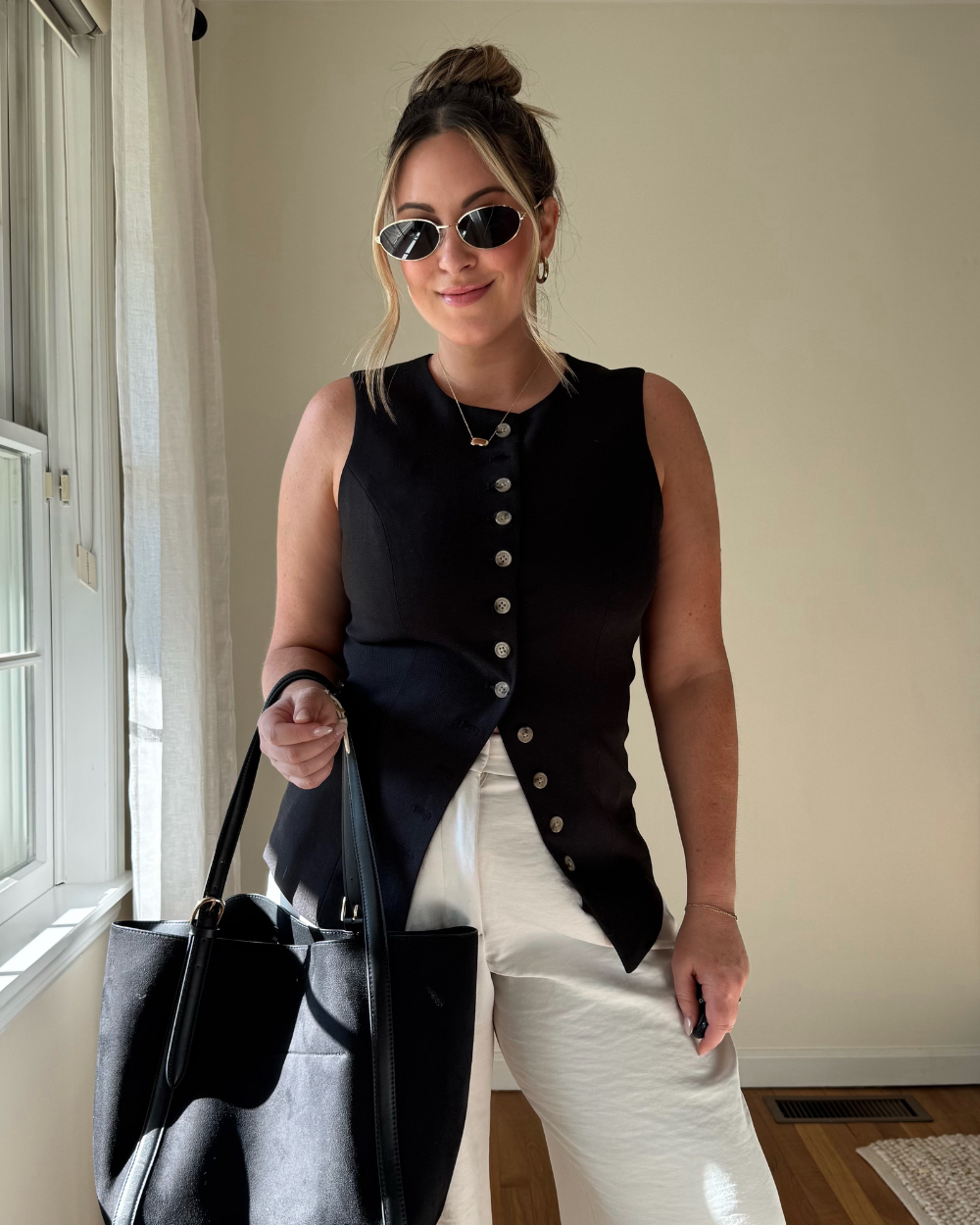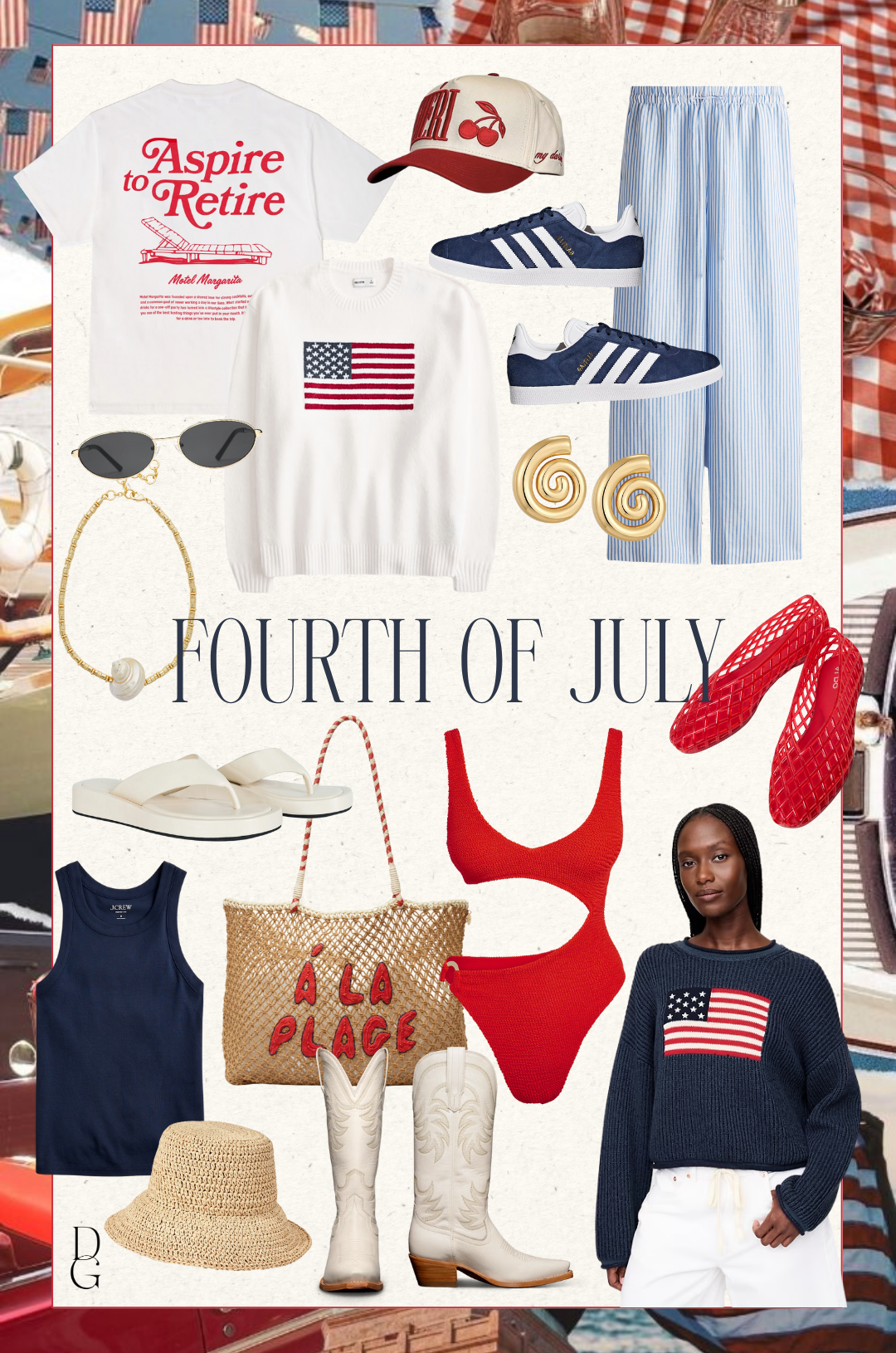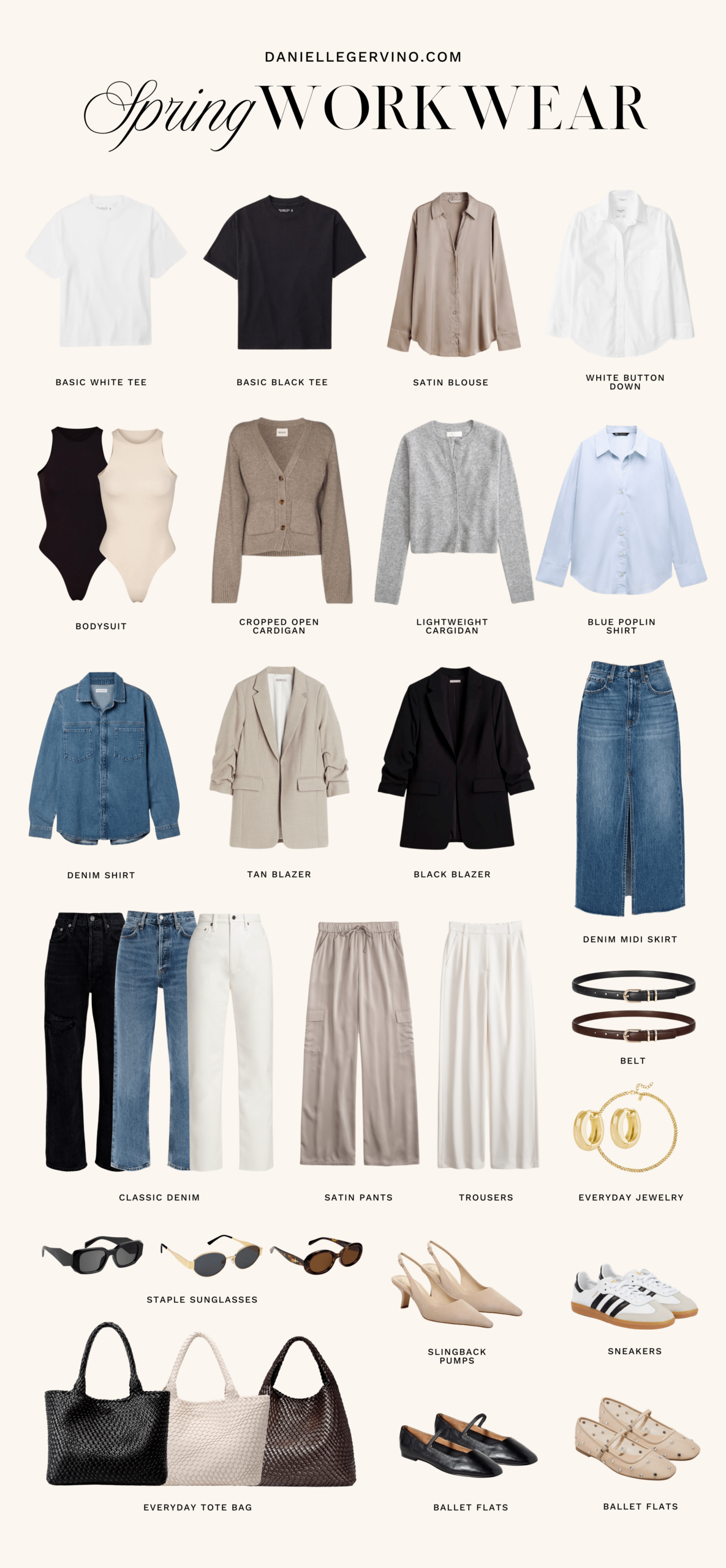Everything You Need to Know About Tape-In Extensions
In the past few years, my most-asked hair question was always, "Do you wear extensions?" and for the longest time, my answer was no!
My hair type has always been thick and I've always worn my hair long, so naturally, people would assume that I had some help.
When my friend and colorist @hairbymaloriegreene suggested extensions to me, my immediate was response was "No way. I totally don't need them. What's the point?". Her answer..."Oh, you don't even know. Let's just try them! I promise, you'll be obsessed". I thought she'd be wrong. She was right.
Since putting in extensions, I've received lots of questions regarding the process and procedure, costs, type, upkeep, etc. so I'm breaking down everything you need to know about tape-in extensions today. I'll also give you a quick rundown on the other types of extensions out there, because I know a common first question when thinking about extensions is, "which type do I get?".
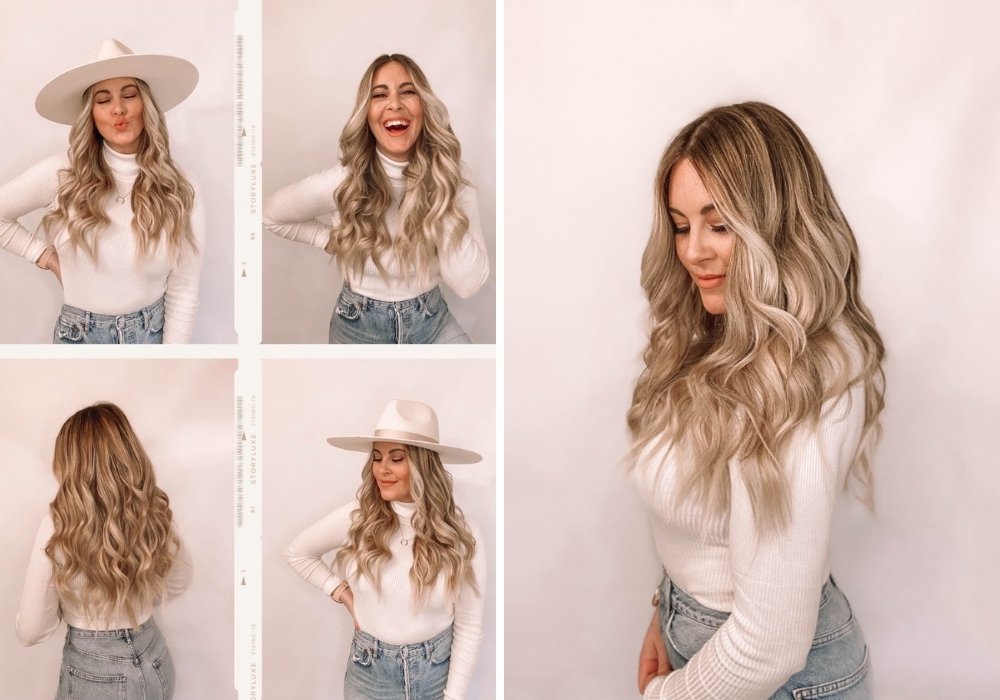
What type/brand of extensions do you get?
I put this one 100% in Mal's hands. As an extension specialist, I trusted her opinion wholeheartedly. Mal has been trained in a few different extension methods, but prefers tape-ins because of the ease for clients and lack of damage to your hair (more on that later).
The brand I use is Hairtalk Tape-In Remy hair extensions, 21" length (which we trim). Tape-in extensions create a water-tight seal by securing your hair between two hypoallergenic adhesive bands for a long-lasting application. The adhesive wefts lay completely flat on the head causing no tension and are easy to remove.
We opted for the "ultimate" Tape-Ins, in which hair covers the tape, creating virtually no visible seam (although the regular Tape-Ins without hair covering the seam blend great too). This option is more costly, but my hair is always moving around and creating its own parts, so I didn't want to take any chances with them showing!
Mal matches two colors to my hair. One; rooted at the top, which is great for balayage. Two; all bright blonde, which is great to add that brightness throughout. We try to keep all of the rooted pieces outside-facing so they blend perfectly with my natural color.
Are there any other extension brands you recommend?
Mal's recommendations are Hairtalk, Hot Heads, JZ styles and Bellami. Ultimately, if your extensionist knows what they're doing, they'll most likely have a brand they use and love, which will work with your hair!
Do tape-in extensions ruin your hair?
It's important to remember that we all have different hair types; what might work for mine, may not work for yours. That being said, Mal prefers Tape-In extensions because they are the safest for your hair and do not damage it.
Tape-Ins are made with waterproof, medical grade adhesive which is safe to wash, heat style, etc. The actual hair goes through a process where its deep cleaned, colored and treated before its used as an extension. Moreover, the extensions are virtually weightless. Often times other extension methods create a weight on your natural hair follicle which can damage it that way. With Tape-Ins, the small piece of hair that's sandwiched between the two extensions matches the weight of the Tape-Ins so that the weight is balanced, and not weighing down your hair.
With Tape-Ins, you also don’t have to do as much to your natural hair. Heat styling and damage is cut down, hair can grow quicker from less damage, and your hair gets healthier in the process.
My experience: My hair feels thicker, but not heavier. Of course there's added weight because there's more hair overall, but I feel no stress on my natural hair. When we remove the extensions, we'll maybe see a few strands of hair that come out with the tape, but generally speaking, my hair feels even healthier than before.
Mal described it to me that with other some of the extension methods, you'll feel the need to keep the extensions in because your hair is slowly getting damaged over time. Tape-Ins are a method that you can actually to do heal your hair, and eventually take out (once your hair grows, heals, etc.).
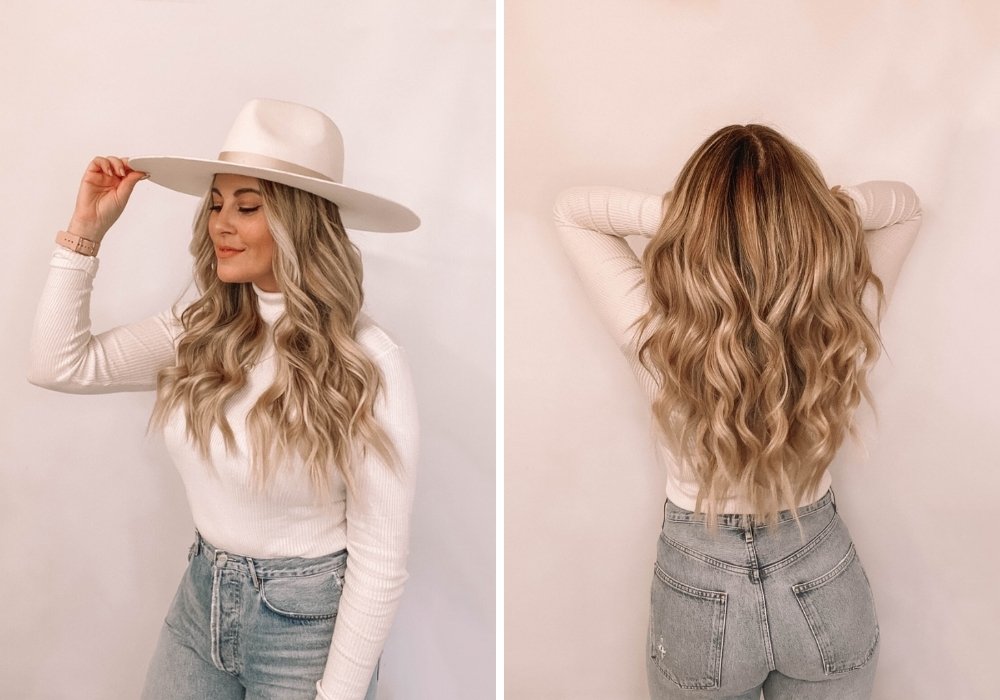
How long does the process of putting them in/removing them take?
Another reason why I love Tape-Ins...they're SO quick. Putting the extensions in depends on how much hair you're using, but the actual "install" typically takes about 30 minutes for a full head. Important to note that hair needs to be clarified and blown out before putting extensions in through so that time may need to be added on.
Removing extensions may take a little longer (about 45-minutes).
What is the process of removing tape-in extensions?
A remover spray is sprayed on to the tape, which loosens it and allows the two pieces to pull apart. Then, the extensions are re-set with new tape (basically creating a brand new extension), so they can be taped back in.
How long do tape-ins last?
This depends on how quickly your hair grows, and your preference for how close the extensions sit to your root. When the Tape-Ins are first applied, they're applied about 1/4 inch away from your root. The average time people wait before getting the extensions moved back up is 6-12 weeks. I typically wait 8 or so weeks!
In terms of replacing your actual extensions, it's recommended that you get new hair every year (some people stretch this to 1 1/2 years - 2 years). Since the hair isn't acting like your natural hair (growing, being trimmed, growing more, etc.), over time, it needs to be replaced.
Do tape-in extensions need to be treated differently than your natural hair?
For the most part, no! It's important to be mindful not to put any oils or conditioners close to your root where the tape lies, which can loosen the adhesive over time. Other than that, however, as long as you're taking care of your hair with a heat protectant, they can be washed, blowdried, and heat styled as usual.
Should people with already thick hair get extensions?
Totally! Extensions can be used for length and/or thickness. Having thick hair (like I do) doesn't mean you shouldn't get extensions. Another scenario for which Mal recommends Tape-In extensions is if your hair is damaged. There’s a lot you can do with color on extensions instead of actually coloring your hair by creating balayage, highlighting, etc. without damaging your natural hair.
What are some other options/methods for hair extensions?
Here are some more popular types right now...
Bonded extensions – Individual keratin bonds melted into individuals strands of hair.
Micro-Beads - Small beads attached to individual piece of hair, then looped into hair and clamped.
Hand-Tied/Beaded Wefts - This method uses a track similar to a weave that's placed around your head like a halo and hand-sewn in.
Major benefits to Tape-In extensions are the no damage, natural grow out and the minimal time (some other methods can take 5+ hours to install).
Most annoying thing about having extensions?
More Hair - The cool thing about Tape-In extensions is that I got used to the feeling of having a shit-ton of extra hair on my head in about 2 days. Sleeping on them for the first few nights after a move-up can sometimes feel a little weird because they are so close to your scalp. As long as you sleep with your hair down or braided though, that feeling of having "something in your hair" disappears in a day or two.
Like I mentioned, more hair also means more time. I won't sugarcoat it. Drying them is a pain in the ass (styling is not too bad).
Tangles - Extensions are prone to tangling too, so it's important to brush them in the morning and before bed. Really, it's created a better habit for me, but I totally used to skip out on brushing my hair before bed!
No more messy buns - You can certainly wear your hair up with extensions but it definitely feels weird to me, so I prefer to keep it down. Whereas I used to throw my hair up in a messy bun for a workout or before bed, I'm now used to a low pony instead.
Overall
I adore my extensions! The added length allows me to do so much more with my hair, and the extra thickness just creates a stunning look. Getting them for the first time took a little getting used to in terms of maintenance, etc., but they quickly felt like a part of my natural hair. Now, it feels weird when they're not in!
Whew! I know that was a lot of information, but I hope this answered all of your questions! Mal helped me out with a lot of this post so I could make sure I was giving you the most accurate information from someone who is insanely knowledgeable and thoroughly trained on extensions.
See more hair posts here!
